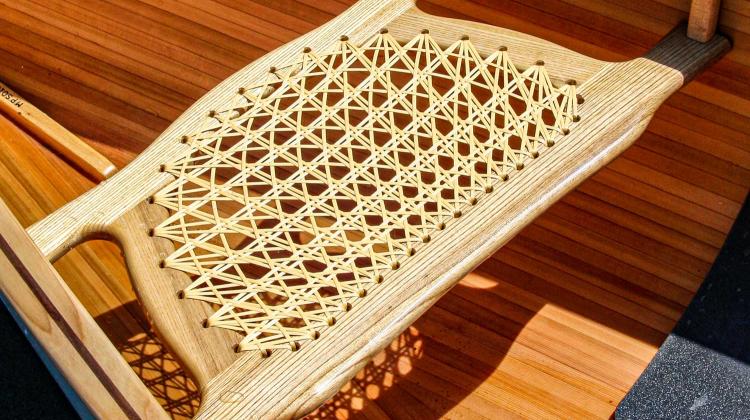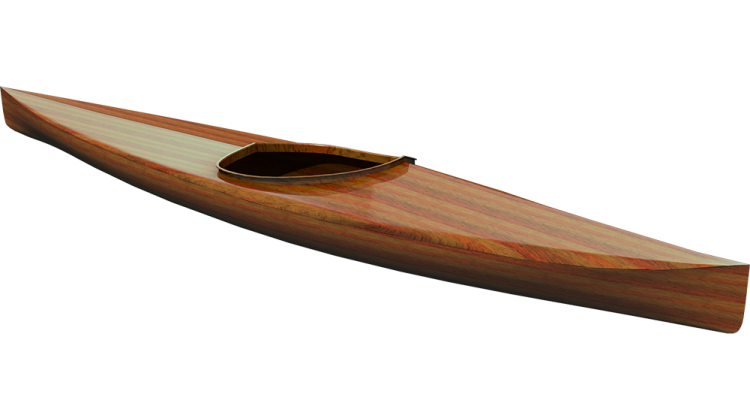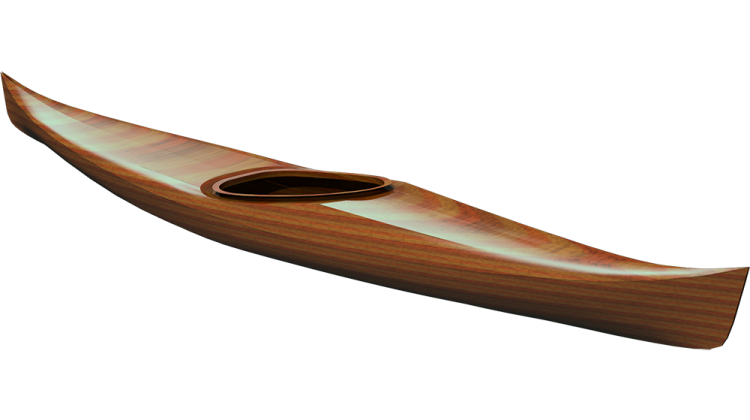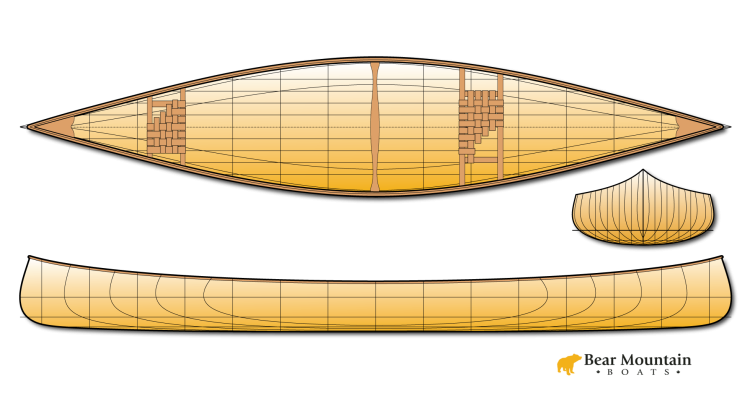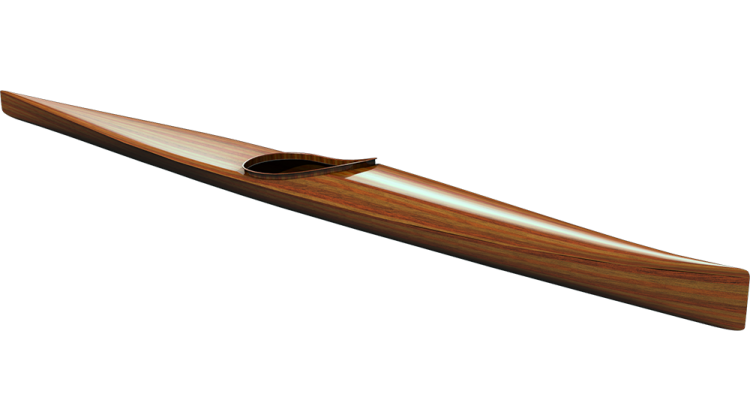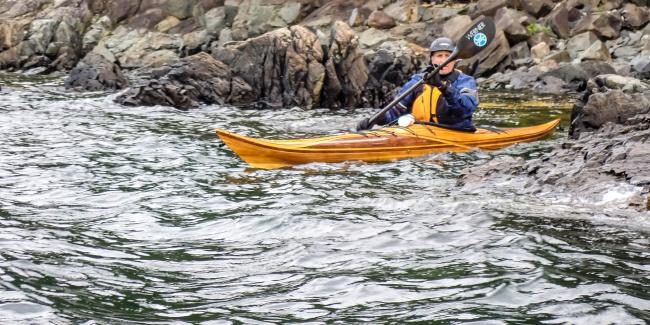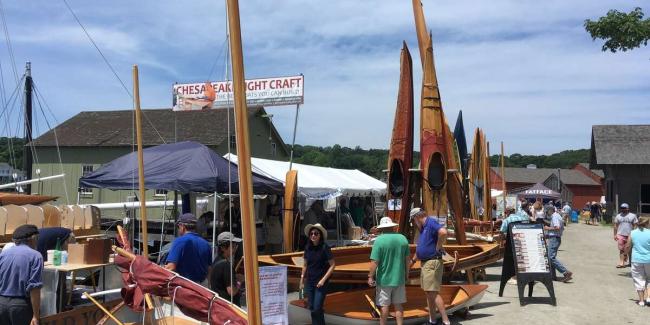Transcript:
Hi, I'm Nick Schade at Guillemot Kayaks. In this fourth episode of making the skin on frame microBootlegger Sport, I will be fitting the stringers.
I made up a quick drawing showing the locations of each frame. I'm marking those locations on the strongback I use for my strip built kayaks. Because the kayak tapers towards the ends, the reference location of a frame is the face closest to nearest end.
Risers screwed to cleats will be used to hold the frames at the correct location along the length. I'm only using the risers to establish the lengthwise position. I'll let the stringers define the frame height and centering.
A couple clamps loosely hold the frames to the risers.
The first stringers are what substitute for my sheer or gunwales. These are 1-1/2 inch tall by 3/8 inch thick. They run perfectly parallel to the waterline. As such they serve to establish the height of each frame.
In the cockpit area I have spacers between some frames. They are connected together with a mortice and tenon. I did not dog-bone the mortices with the shopbot, so I use a rasp to quickly round over the corners of the tenons so they will fit correctly.
This is really just a test fit, so I am using zip-ties to hold the stringers instead of lashing. I wanted to see how things went together before I finalized some to the fits.
The stem frames include a little birds mouth to accept the ends of the keel. Holding the keel in place next to the frame, I mark and cut it to fit.
With the sheer and keel stringers installed, the frame positions are now defined and I can start adding the rest of the stringers to create the shape of the hull.
The microBootlegger Sport design features the same kind of transitioning chine of my Petrel Play. At the stern the chine is quite hard, but in front of the cockpit it becomes more rounded. I will accomplish this by blending one stringer into another midway along the length.
This first chine stringer extends from the stern to a point along the keel line where it blends into the keel stringer.
At the point where the chine stringer meets the keel stringer I create a tapered cut to match the intersection of the two pieces.
This fit will need some refining but I first install the matching chine stringer on the other side.
Once both chines are installed, I can make a better cut and touch it up with a block plane.
Beginning roughly at the cockpit a second stringer splits off from the chine stringer. This is gradually tapered to blend smoothly into the chine and then spreads away as it approaches the bow.
I started by clamping the cockpit end to the existing chine stringer. Then I traced the edge of the chine on to the stringer.
I brought this to the band saw to cut off the excess and cleaned it up with a block plane.
Using the plane, I rounded over the new edge.
Now all the bottom stringers are installed. I checked the alignment looking for wonky shapes, but it looks pretty good without any adjustment.
I started installing some of the top stringers while the frame was still upside down. When it became hard to reach things I flipped the whole deal over.
The center fore-deck stringer ends at the front of the coaming. I transferred the slope of the coaming to the stringer and planed it to match.
I'm not a fan of being poke in the stomach with sharp sticks, so I trimmed off the end of the stringer appropriately.
The coaming and the deck side stringer want to occupy the same volume of space. So, I marked where they hit including the slope of the coaming. I then whittled out the bits of stringer causing the problems.
The upper fore-deck stringer also intersects the coaming recess, so I marked the angle and cut off the ends.
The other end of the stringer needs to be planed to lie flat against the stem frame.
Now I went back and trimmed the ends of all the remaining stringers.
The next day I disassembled everything.
This project is really an experiment. I have some ideas on how to do a skin-on-frame that is a little different and I just want to check them out. I've already made some new frames and added a couple parts.
Although zip-tying it all together, then taking it all apart again adds some un-necessary steps, it allowed me to check how things were working and think about how to proceed.
For example, should I add holes for lashing, and if so, where should they go. Looking at it put together helped figure this all out.
I decided to add lashing holes, at least in some places. So I used an 1/8" drill to punch the holes.
These holes were also countersunk slightly to protect the lashing.
I added some more holes to the coaming piece to help lash it down.
While I had the frame disassembled I took the opportunity to give all the parts a protective coat of oil. I could do it after the frames done, but I have found that the oil can dissolve the wax coating on the lashing sinew a bit. This can loosen up the knots.
In the next episode I'll be assembling the frame and lashing it together.
If you enjoy watching these videos please hit like, subscribe if you haven't already, share it with your friends.
I'd be happy to answer any questions you put in the comments section. To answer one frequent question, it is my goal to eventually off plans, and possibly kits, but first I need to work out all the details, and make sure the design work. I don't know when the plans will be available.
Until next time, thanks for watching and happy paddling.

